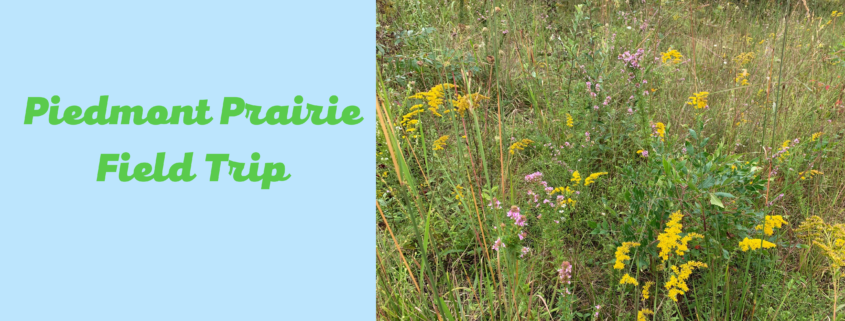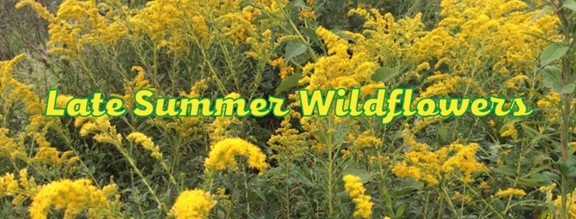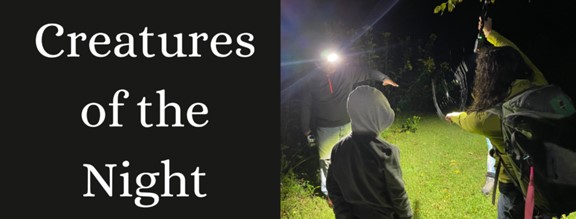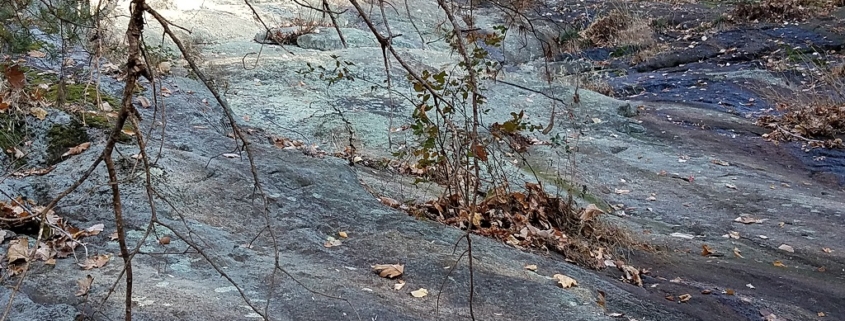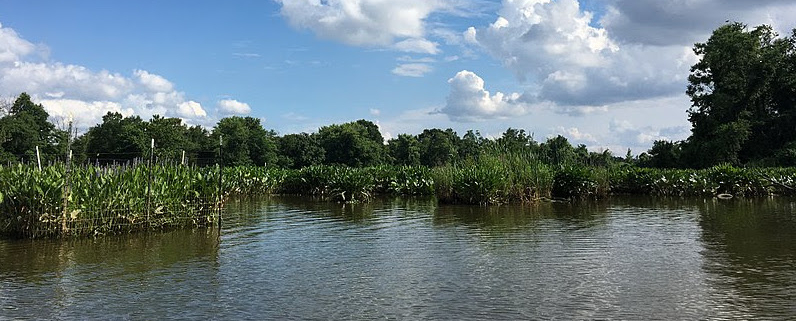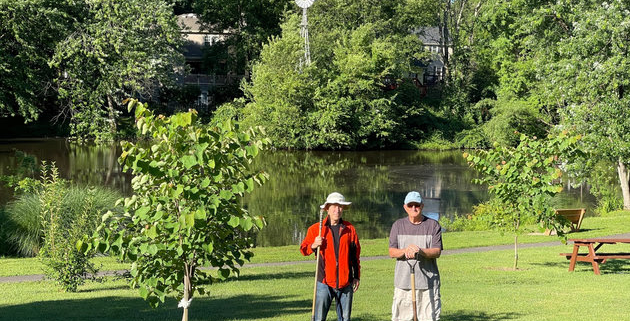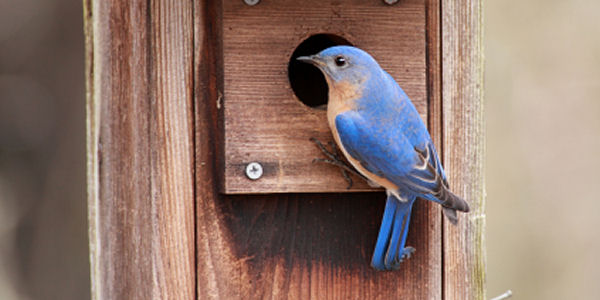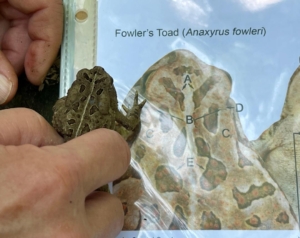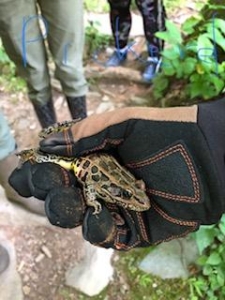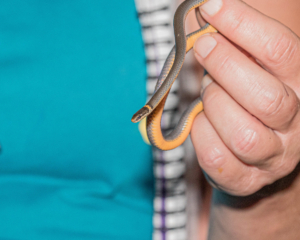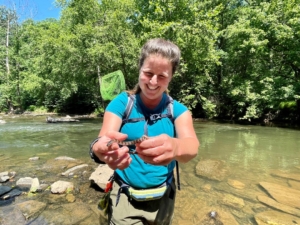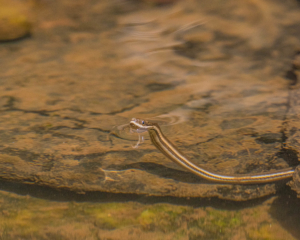All photos by Jerry Nissley
The day I visited the newly renovated Hidden Oaks Nature Center (HONC) the primary parking lot was full so I drove around to the secondary lot, which only added about 75 yards to my walk to the Nature Center. Had the primary lot not been full I would have missed the delightful new Storybook Trail. The trail provides stations along the way that tell a story about two friends – a chipmunk and a squirrel, with pictures and paragraphs. The flip side of the station signs provide fun facts about the critters.
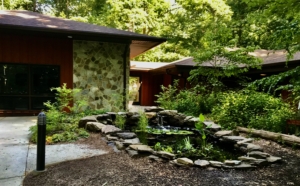
New pond area
In a way, this concept incapsulates what the park is all about. HONC creatively makes everything a learning experience without overtly stating, ‘Now children, this is an educational experience, blah, blah, blah”. All the children I saw were having fun and deeply engaged with whatever activity they were involved with. While I was there, according to their identical multi-colored t-shirts, two summer camp groups were visiting. One in the outside learning center and another experiencing the indoor facilities. Outside a younger group was being read a story fully supported with visual aids; I saw a fox and a squirrel in a frenzied action sequence controlled by the puppeteer all approved by chortles and guffaws of children.
Inside a preteen group was immersed in viewing several terrariums and aquariums housing different Virginia native reptiles, amphibians, insects, and fish.
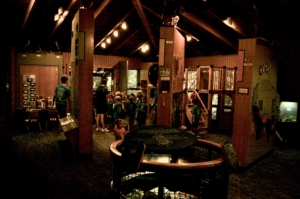
Inside critter room with day camp group
Hidden Oaks Nature Center is nestled inside the 52-acre Annandale District Park. You’ll find live animal displays, exhibits, a pond, creeks, ADA compliant woodland trails, gardens, play areas, a rain garden and a resource library. In 2019 artisan Andrew Mallon was commissioned to carve a wildlife tree sculpture utilizing the 10’ high tree stump left after a poplar tree was struck by lightning right outside of the Nature Center. The fabulous carvings creatively depict 11 animals native to the park.
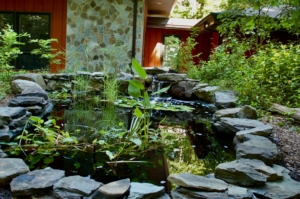
Closeup of new pond
The $2.1 million expansion to the Nature Center provides new rooms to host community events, freshly designed creature displays, bilingual reading corner, and ADA compliant restrooms. Improvements to the park grounds include a short interpretive nature trail, updated outside creative play area, ‘The Nature Playce’, and a newly designed pond. The formal grand opening was held last weekend, 16 July 2022, with much fanfare, speeches, Bolivian dancers, ribbon cutting, and fun activities for all.
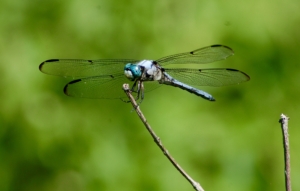
New pond resident
Sure, HONC may be geared towards the children’s learning experience but I didn’t want the storybook to end.
For more park info and a Flickr review of the grand opening check out the following link. Once on the park site, scroll down for the Flickr show.
Hidden Oaks Nature Center


